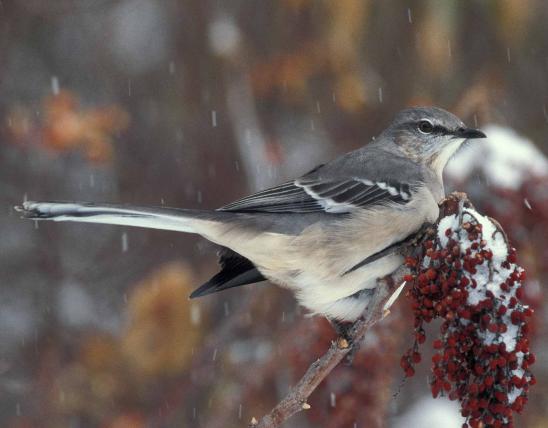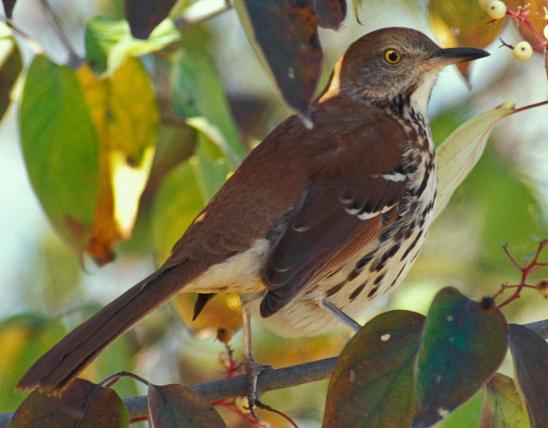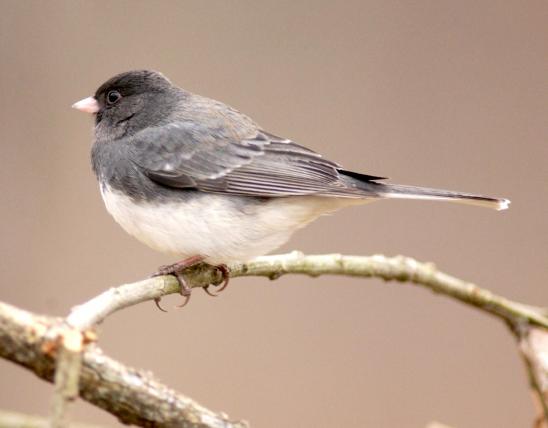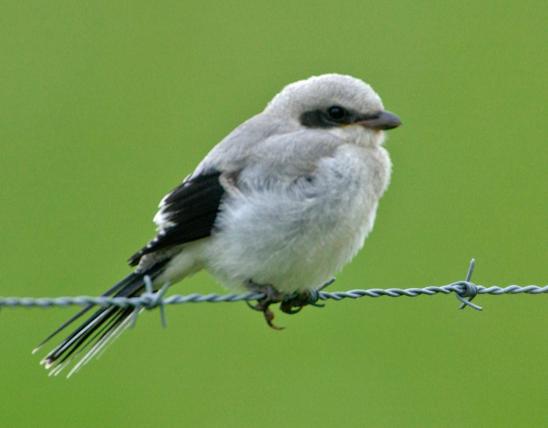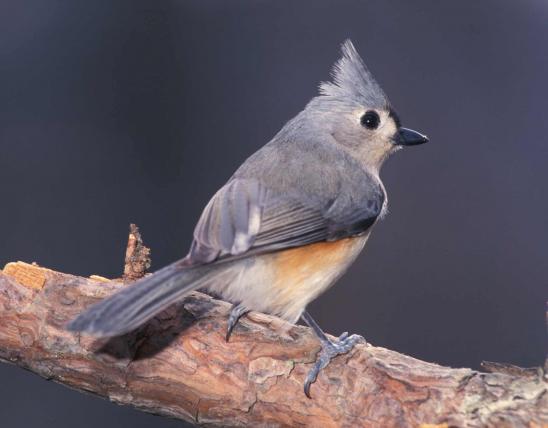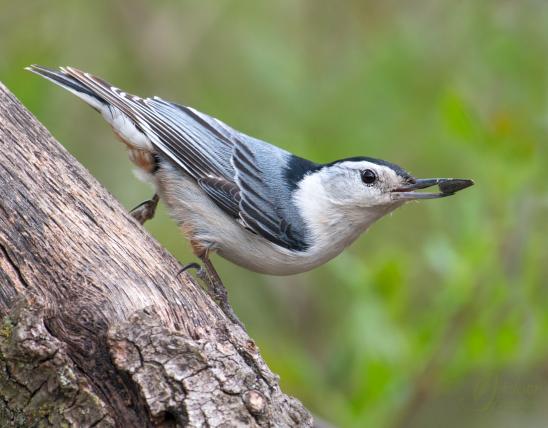
Adult upperparts of gray catbirds are dark gray with a black cap. Underparts are gray, with rusty undertail feathers. The song is a complex jumble of musical and nonmusical squeaks, whistles, clicks, and nasal sounds; the phrases are not repeated as they are in brown thrasher and northern mockingbird songs. Calls are a distinct and characteristic down-slurred catlike meeoow and a harsh kute or tcheck.
Similar species: Bill and body shape, overall size, black cap, and lack of white distinguish the catbird visually. By sound, its distinctive down-slurred “mew” and long random assortment of notes easily distinguish it from our other mimic thrushes, the mockingbird and the brown thrasher, which tend to repeat each short phrase one or a few times before singing the next one.
Length: 8½ inches (tip of bill to tip of tail).

Statewide.
Habitat and Conservation
Often heard, then seen, as they forage in shrubby areas, parks, and landscaped yards, especially in summers in the northern part of the state. In southern Missouri they are mostly observed in thickets along streams. Catbirds can be difficult to locate, being dark gray and skulking around within dense bushes and trees. Singing males, however, advertise their presence acoustically.
Food
Catbirds forage for insects, spiders, berries, and fruits in shrubby areas. They have long been blamed for their habit of eating cultivated fruits, such as cherries, grapes, strawberries, and raspberries, but they generally prefer wild berries such as deciduous holly, poison ivy, mulberry, blackberry, elderberry, greenbrier, mulberry, dogwood, and sumac. And in summer, with nestlings that need plenty of protein, they mostly eat insects, including many species that are harmful to crops.
Status
Common summer resident, especially in northern Missouri. As winter resident, common in the southern part of the state, accidental in the north.
Life Cycle
The bulky nests of catbirds can be “veritable scrap-baskets.” Females build them of twigs and other materials, including trash, but line them softly with grasses, hairs, and so on. A clutch comprises 1–6 eggs, which are incubated 12–15 days. At hatching, the young are naked and helpless, but they fledge just 10 or 11 days later. There can be up to 3 broods a year. They defend their nests vigorously. Catbirds themselves sometimes destroy the eggs and young of other forest songbirds.
Human Connections
Catbirds sing jazz solos, improvising nonstop for minutes at a time. Listen closely; you may hear them quote the tunes of cardinals, robins, wrens — even frogs or chickens — but the solo is truly unique. The catlike “mew” is often viewed as a musical flaw, but there’s no accounting for taste.
Ecosystem Connections
Being fruit eaters (frugivores), catbirds distribute berry seeds far away from the parent plants, creating new populations of blackberries, elderberries, sumac, and so on. As insectivores, they help limit the populations of insects.


















About 350 species of birds are likely to be seen in Missouri, though nearly 400 have been recorded within our borders. Most people know a bird when they see one — it has feathers, wings, and a bill. Birds are warm-blooded, and most species can fly. Many migrate hundreds or thousands of miles. Birds lay hard-shelled eggs (often in a nest), and the parents care for the young. Many communicate with songs and calls.






















